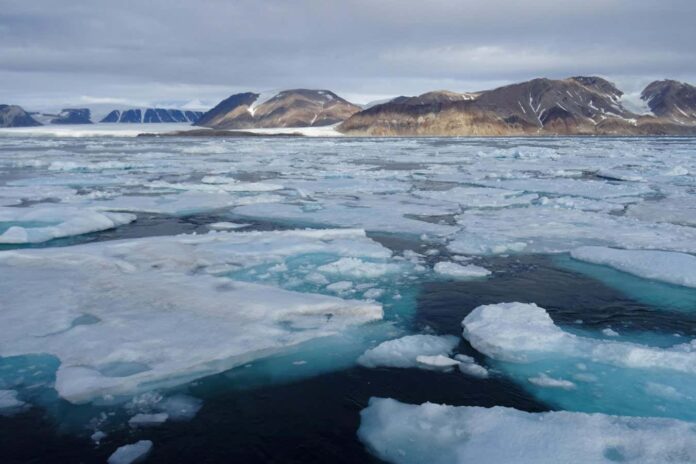
Broken sea ice in Lancaster Sound, part of the Northwest Passage
Alison Cook
Shipping companies have anticipated that melting sea ice will open a shorter route through the Canadian Arctic, but they may see their hopes dashed by thicker ice flowing in from further north.
“The northern part [of the Northwest Passage] is not going to be an open new shipping route anytime soon,” says Alison Cook at the Scottish Association for Marine Science.
For more than a century, sailors have navigated the icy waters of the Canadian Arctic along the Northwest Passage, which has offered a treacherous but efficient route between the Atlantic and Pacific Oceans. Melting sea ice due to climate change has made the southern part of the passage less risky, and voyages through it have quadrupled since 1990.
The northern part of the passage promises an even shorter route, but few ships use it because it remains bound with ice for more of the year than the southern part does. However, the entire passage had a nearly ice-free summer in 2007, and additional warming has occurred since, leading many to assume the northern part of the route is on track to become routinely navigable. That possibility has spurred visions of an Arctic shipping boom.
Cook and her colleagues used ice charts that the Canadian government supplied to sea captains between 2007 and 2021 to assess whether such visions were coming true. For each section of the Northwest Passage, they determined the number of weeks per year with little-enough ice that it would be safe for a moderately ice-worthy vessel to sail through.

Map showing the routes that can be taken through the Northwest Passage in the Canadian Arctic Archipelago
Alison Cook
This detailed view of the ice revealed that, rather than an opening of the passage, the safe shipping season declined along several “choke points” during that period, especially on the northern route. The shipping season in the east of the Beaufort Sea fell from 27 weeks to 13 weeks, for instance. The M’Clure Strait season declined from 6.5 weeks to just 2 weeks of safe shipping per year. Other areas saw seasons extend by a few weeks or experienced no change, but the openness of the overall route is set by the section with the shortest season, says Cook.
The researchers attribute the shorter seasons mainly to an increase in thicker sea ice flowing in from the region north of Greenland known as the Last Ice Area. As the climate warms, this site is expected to be the final redoubt for Arctic sea ice. “It’s becoming a bit less robust because of climate change, and it’s becoming more mobile,” says Cook.
The finding matches expectations that ice will survive longest in the Canadian Arctic, says Amanda Lynch at Brown University in Rhode Island, who wasn’t involved with the research. A bigger geopolitical and economic question now is how melting ice will affect shipping on the Russian side of the Arctic, she says.

